How to Attract Birds to Your Birdhouse
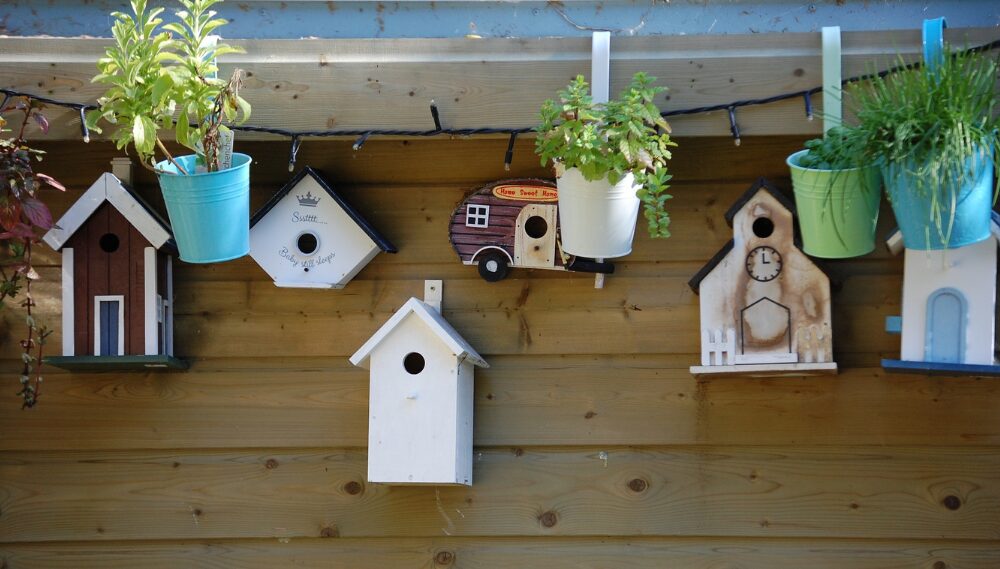
If you’ve spent money buying or building a birdhouse only to find that none of your feathered visitors are attracted to settling in, don’t be disheartened. There are some simple changes you can make to attract visiting birds to stay and set up home.
By making some small refinements, you can enjoy the company of chirping birds in your outdoor space. More often than not, the solution is to change the location of your birdhouse or incorporate additional accessories to make your birdhouse more appealing.
In today’s guide, we’ll explore these solutions so that you can make your birdhouse the go-to abode for any visiting bird. We’ll cover everything from the perfect materials and locations and everything in between. By the time you’ve finished reading this guide, you’ll be able to sit back and relax in an outdoor space that plays host to all sorts of astonishing avian creatures.
Birdhouse Ideas: Important Factors to Consider
Before you start looking into prospective bird feeders and bird baths, it’s important to consider essential factors that will shape how you approach your birdhouse ideas.
To create an appealing birdhouse, consider the following:
1. Bird Species
Birds come in all shapes and sizes, with different habitats and dietary requirements. Try researching species of birds in your area.
Then, decide what types of birds you wish to attract and build/buy your birdhouse ideas around your choice. The type of bird you try to lure to your birdhouse will affect its size and entrance dimensions.It will also influence where you position your birdhouse; you’ll want to ensure any visiting birds have close access to their preferred food source.
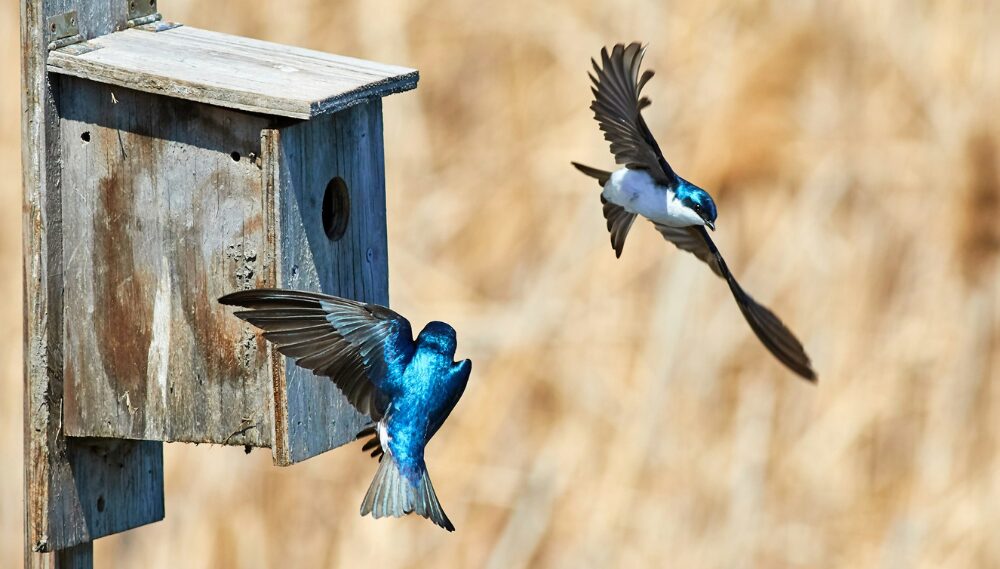
2. Materials
It is essential to choose materials for your birdhouse that are easy to maintain and offer ample protection from predators. Additionally, ensure that the materials you use for your birdhouse can withstand harsh weather conditions, provide adequate insulation, and don’t cause harm to the nesting bird (for instance, paint could prove toxic to birds).
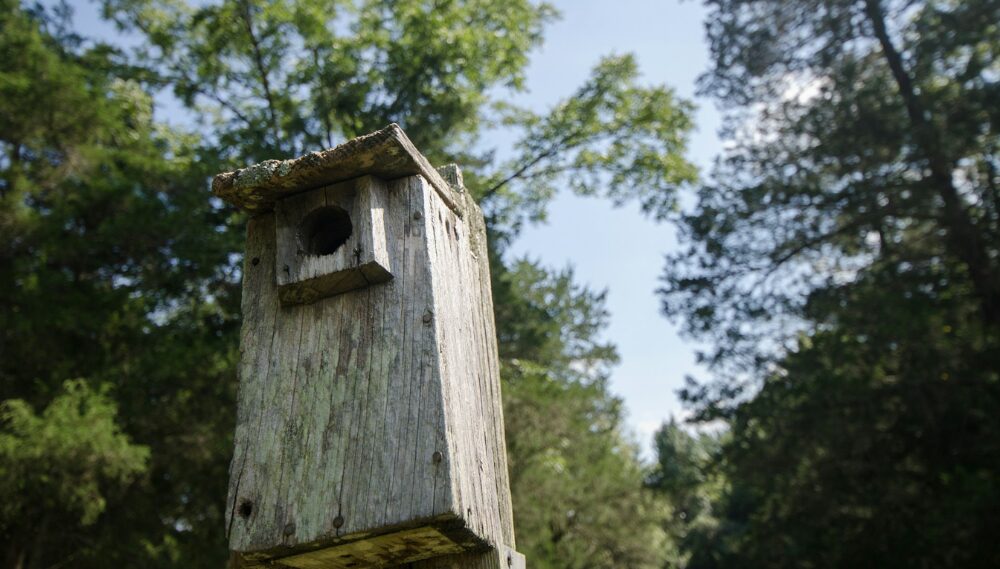
3. Location
Choosing the correct location to install your birdhouse will increase your chances of attracting nesting birds.
Some birds are cavity-nesting birds, meaning they naturally gravitate toward birdhouses mounted on trees or poles. On the other hand, ground-nesting birds will prefer birdhouses placed on the ground in open areas.
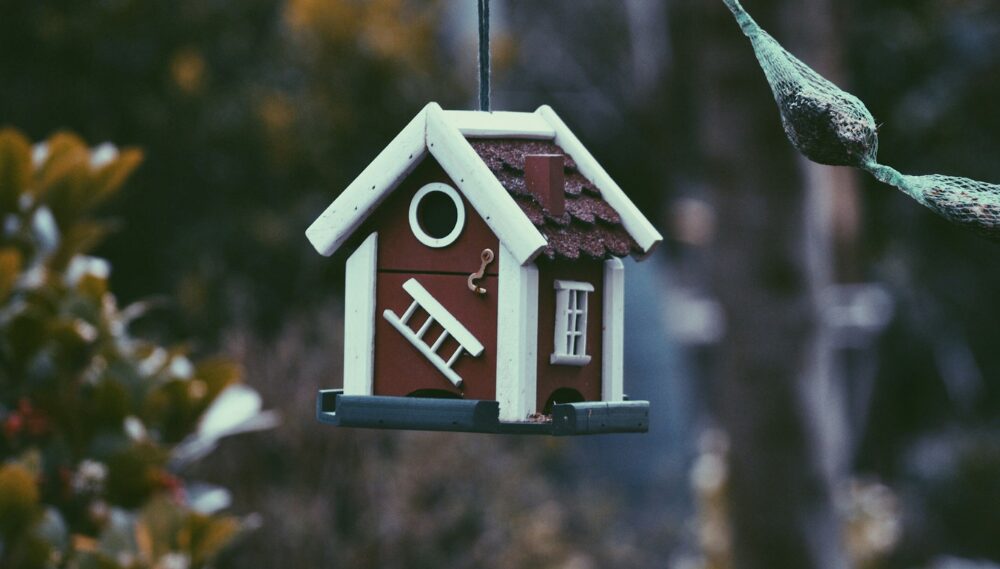
4. Insulation and Ventilation
When a birdhouse has effective insulation, it will stay warm in the winter.
Providing a warm birdhouse in the colder months is attractive to visiting birds and essential for nestlings, as severe cold temperatures can be detrimental to their health.
Good ventilation is also essential, as ventilated birdhouses allow a continuous stream of fresh air inside the birdhouse, protecting it from high humidity levels and the possible build-up of mold.
Therefore, it is essential to ensure that your birdhouse is properly insulated and ventilated to provide a habitat that is appealing and, most importantly, safe for birds to nest in.

5. Aesthetics
Yes, believe it or not, the aesthetics of your birdhouse will play a role in how many birds visit your nest boxes. Birds prefer to make their nests inside birdhouses that utilize colors like grey, brown, and muted greens.
In other words, birds are attracted to birdhouses that provides ample concealment from predators. Another reason to avoid bright colors is that paint can contain toxic substances that can prove lethal to the birds that inhabit your birdhouses.
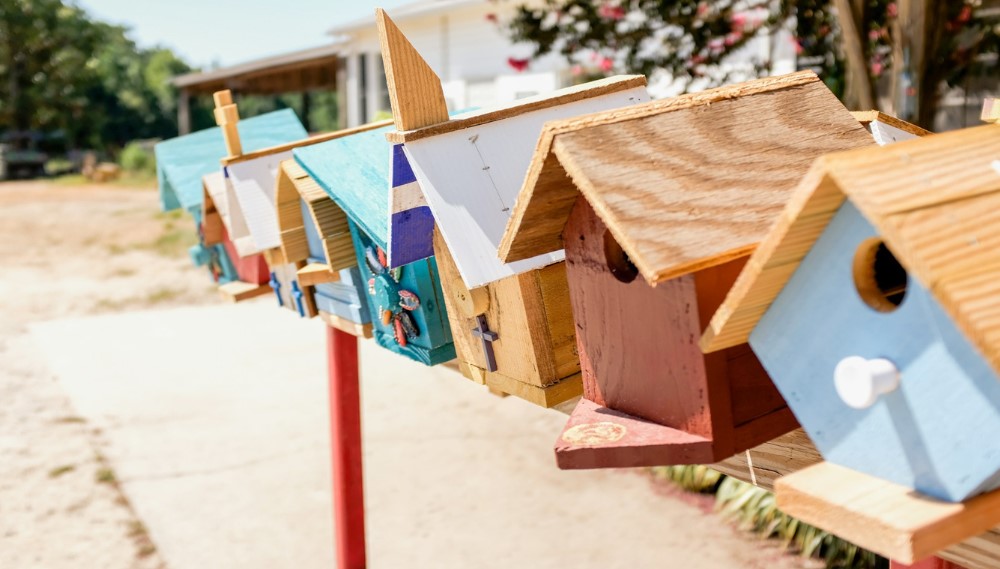
6. Weather Conditions
Consider the typical weather conditions of your region. If you live in an area that regularly experiences strong gales, choose a birdhouse with a stable mounting system.
We recommend that you look for structures with heavy-duty mounting brackets or deep anchoring stakes that will allow you to securely attach your birdhouse to your chosen location.

7. Noise Levels
As you are probably aware, birds are fearful of noises, especially those noises caused by us humans.
Although you can’t control how noisy your surrounding area is, you can make some small adjustments that may make your birdhouse more appealing. If possible, position your birdhouse close to natural sound barriers such as shrubs and trees.

The Types of Birds That Use Birdhouses (And How to Attract Them)
All of the factors from the previous section will play a crucial role in how bird-friendly your birdhouses actually are. However, two factors – bird species and materials – are essential and require further explanation. We will begin by exploring different types of birds.
Which Birds Use Birdhouses?
There is no one-size-fits-all when it comes to birdhouses. As previously mentioned, certain types of bird species prefer different nesting sites and food sources, meaning there are various ways of attracting particular species to your birdhouse.
Listed are some species that are likely to use a birdhouse!
- Purple Martins.
- House Wrens.
- Chickadees.
- Tree Swallows.
- House Sparrows.
- Small-sized owls like Screech Owls.
…And How Do You Attract Them to A Bird House?
Each bird species has different requirements that will attract it to a birdhouse.
1. Purple Martins
Purple Martins are a colony-nesting species. This means the best way to attract them is to build or buy a birdhouse with multiple levels and compartments (depending on how many Purple Martins you want to attract).
You can either use a nest box with multiple rooms or create a cluster of hollowed gourds by stringing individual ones close together.
Purple Martins tend to like high nests, so mounting their nests on objects like a pole approximately 10-15 feet off the ground will make your birdhouse more appealing.
Additionally, ensure that your Purple Martin birdhouse is at least 40-60 feet away from trees and at least 30 feet away from human housing.
By doing so, you will provide any passing Purple Martins access to unobstructed flight paths.
2. House Wrens
Less complex than Purple Martins are House Wrens, which prefer small nest boxes made with natural wood or a white box painted with a non-toxic paint.
House Wrens will gravitate towards birdhouses with a small entrance hole that is 1-1 1/8 inches in diameter. This will enable the House Wrens to fly in and out without alerting any nearby predators.
It’s essential to place a Wren-friendly nest box at least 5 feet from the ground. You could even mount your birdhouse on a low-hanging tree branch, as House Wrens don’t mind being swayed in the wind.
Try placing a bird bath nearby to further attract House Wrens to birdhouses.
3. Chickadees
All species of Chickadees will use birdhouses and are easily encouraged into your garden.
Chickadees prefer small to medium-sized nest boxes, ideally located near their natural habitat of coniferous forests where they can forage. If you can, we recommend that you mount their birdhouse on a tree (at least 10-15 feet from the ground) and place wood shavings and pet fur inside.
4. Tree Swallows
Tree swallows tend to do well in areas of grass that haven’t seen a lawnmower for a while. Although this isn’t ideal for those who like to regularly maintain their lawns, this doesn’t necessarily mean you’ll find it challenging to attract tree swallows.
Tree swallows also want to be in close proximity to areas of water, so a small garden pond would be an ideal attraction! Additionally, tree swallows are more than likely to return to birdhouses that have relatively spacious interiors, a bed of chicken feathers, and a ladder for their fledglings to use when they are ready to leave the nest.
Tree swallows are in decline in certain areas, so they are worth attracting into your garden. Ideally, site a swallow-attracting birdhouse on a wall or a tree 10-15ft high.
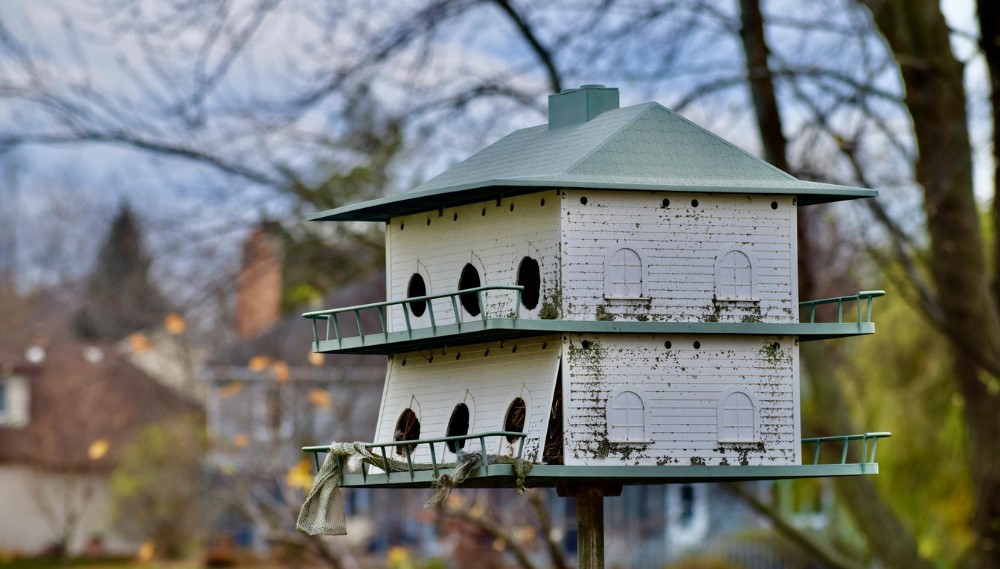
5. House Sparrows
For House Sparrows, a standard nest box with a small entrance hole of 1 ½ inches is a go-to favorite when it comes to seeking out new birdhouses.
Generally, you should aim to place a birdhouse for sparrows approximately 5-15 feet above the ground and – ideally – in an open area where foliage will not block the entrance hole. Having a clear flight path is an essential requirement of a good home for House Sparrows.
Additionally, you’ll find it easier to attract House Sparrows to your birdhouse if you attach it to a tree or on the side of a wall/shed.
6. Screech Owls
For the varieties of owls that will most likely use a birdhouse, there are certain materials that they prefer over others. Cedar and pine seem to be particularly effective materials for owl homes.
In addition to having the right materials, owl houses should be attached to poles or trees up to 30 feet into the air.
What’s more, because Screech Owls don’t build their own nests, they will likely visit your owl house more if you provide nesting materials like wood shavings.
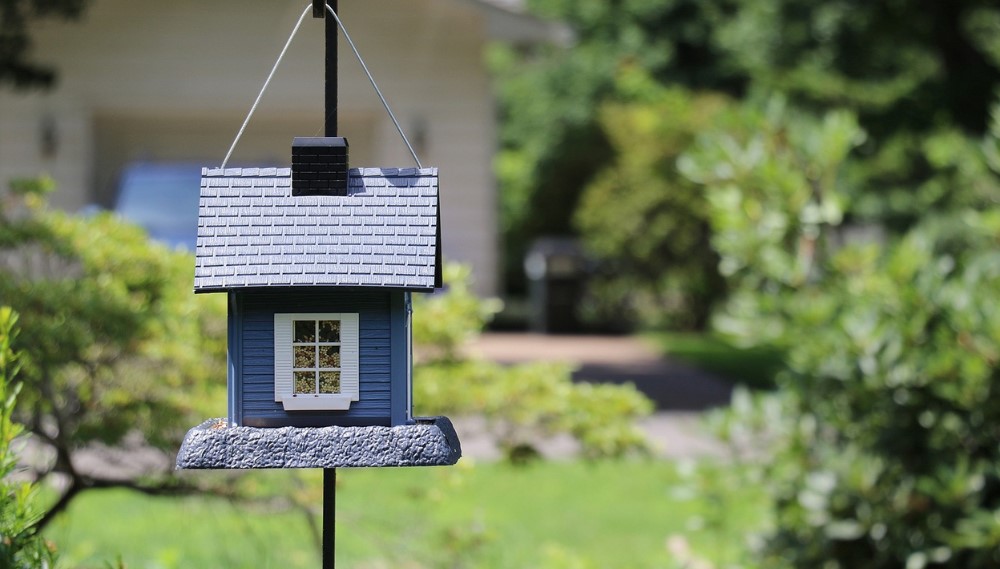
Wooden Birdhouses vs Metal Birdhouses
The materials you use for your birdhouses play a vital role in the amount of birds you are able to attract. Materials you can use for your birdhouses include wood, metal, plastic, and resin. Wooden birdhouses and metal birdhouses have proved to be the best materials to use when creating the perfect birdhouse.
In more detail, we explain the reasons why:
Wooden Birdhouses: Pros and Cons
Pros:
- Wooden birdhouses have a rustic charm and seamlessly blend into outdoor environments, making it harder for predators to locate them.
- Wood naturally provides insulation that is suitable for birds.
Cons:
- They require more maintenance than metal birdhouses.
- They are susceptible to rot and decay, making them less durable than metal birdhouses.
Metal Birdhouses: Pros and Cons
Pros:
- Metal birdhouses are more resistant to damage caused by predators.
- They are easy to clean.
Cons:
- They absorb and retain heat more than wooden birdhouses do, which could be a risk to nestlings if the birdhouse is in direct sunlight.
- Metal surfaces like a copper roof, for instance, are prone to condensation. If you have too much condensation in your birdhouse, you risk an excessive moisture build-up, which can be harmful to birds.
How to Attract Birds to Your Birdhouse: Additional Tips
Before we leave you to browse the web for the best birdhouse for your outdoor space, we’ve assembled some additional tips that’ll help you make your garden an avian sanctuary!
- Try to attract birds that are happy to share a nesting site with other birds.
- Add a bird feeder and a bird bath to your garden.
- Regularly clean your birdhouse when it’s free of inhabitants.
- Leave bundles of natural nesting material like pine needles and dead twigs throughout your garden.
- Always remember to assess the size of your birdhouse’s interior and entrance hole to make sure it’s a suitable home for the type of bird you wish to attract.
Set up several nest boxes, hanging baskets, or gourds.
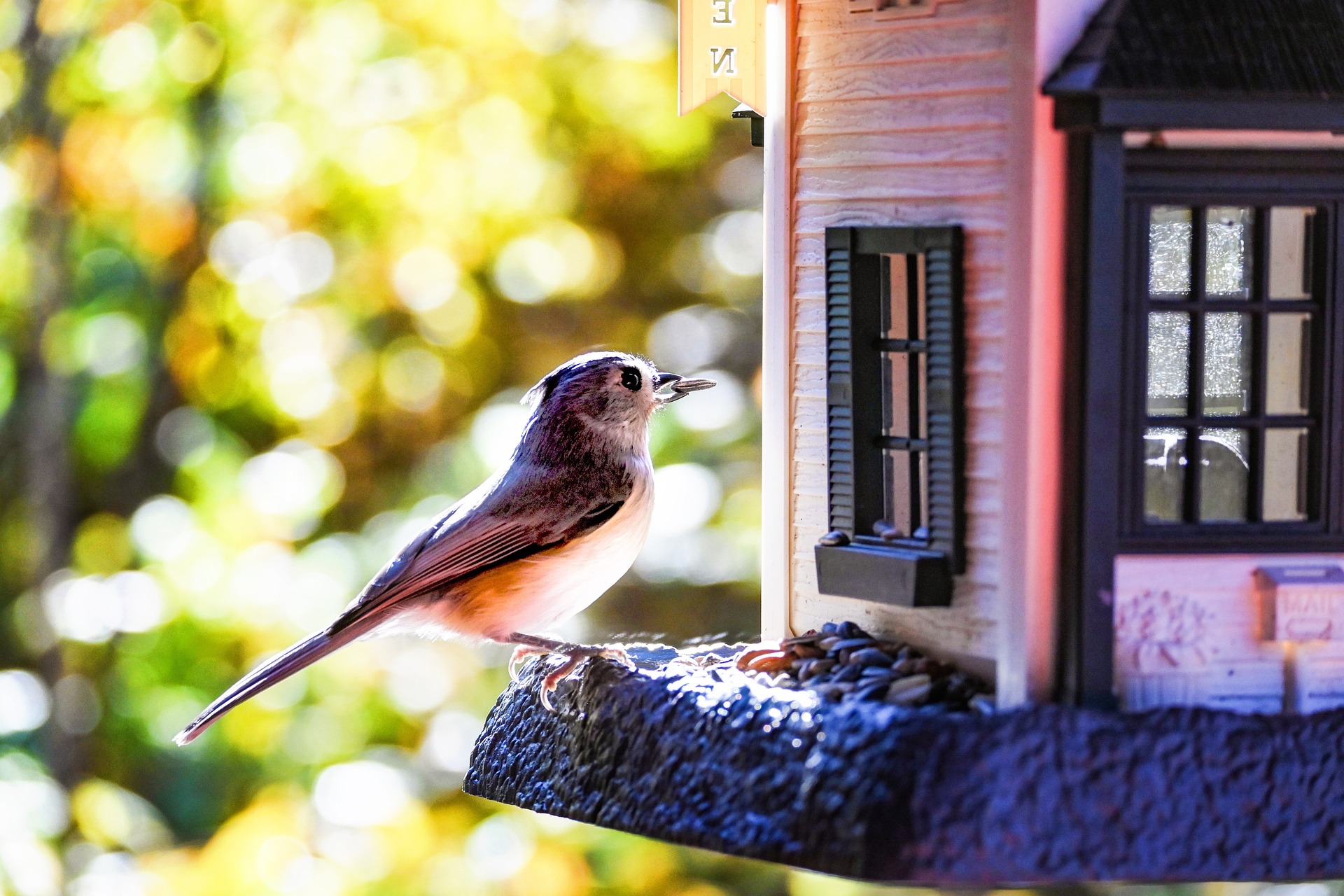
The Art of (Bird) Attraction: Final Thoughts
By following the advice in our guide, you’ll not only be able to find the perfect birdhouse for any feathered visitors, but you will also create a safe and secure habitat for birds to nest in.
Always assess how certain design and placement choices affect the bird’s health and safety.
Before you sit back and relax to the sounds of happy chirps and tweets in your garden, don’t forget to take pictures of any and all of our visiting feathered friends and tag us on social media!For more tips related to all things gardening, don’t hesitate to check out our blogs!
Frequently Asked Questions
Our most frequently asked questions regarding birdhouses.
1. How big should the opening of my birdhouse be?
Of course, the ideal size of your birdhouse’s entrance will depend on the species of bird you wish to attract. However, a good general rule to follow is that your birdhouse’s entrance should be large enough to allow easy entry for the bird but small enough to stop any unwanted species or predators from gaining access to the birdhouse.
2. Where do you put the entrance of a birdhouse?
You can create one entrance hole for the birdhouse just below the roof. In addition, drilling small holes just below your birdhouse’s roof will provide better air circulation.
3. How do I ensure my birdhouse is protected from predators?
Predators like cats, raccoons, and larger birds are prevalent everywhere. Placing your birdhouse in a sheltered area is essential. Choose a birdhouse with a roof that extends about 12cm in front of the entrance to stop predators from reaching inside. Also, consider installing a predator guard on or below your birdhouse and removing any bird perches.
4. Which direction should my birdhouse face?
Ideally, your birdhouse should face between North and East. This way, your birdhouse will catch the morning sunshine but won’t overheat in the midday sun.